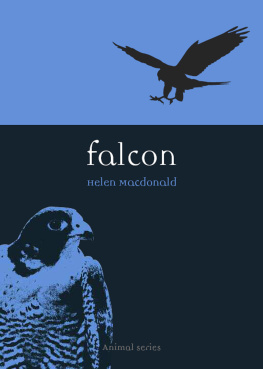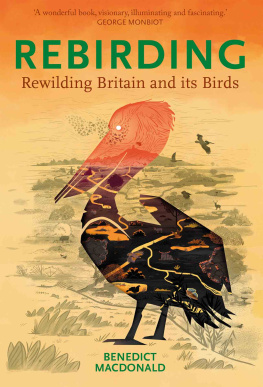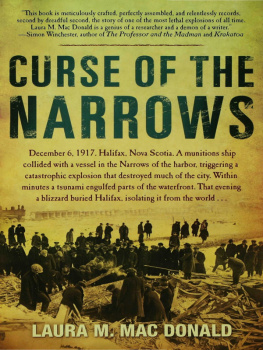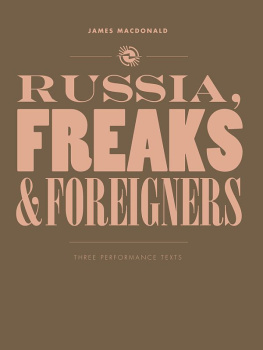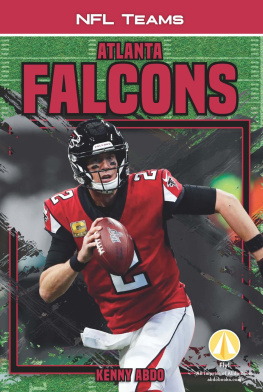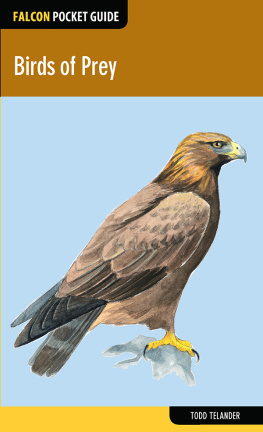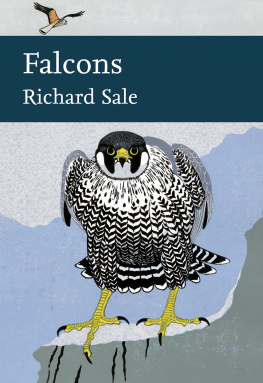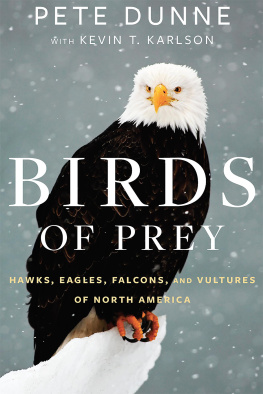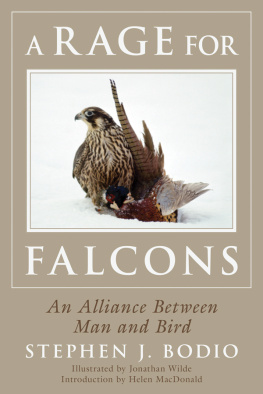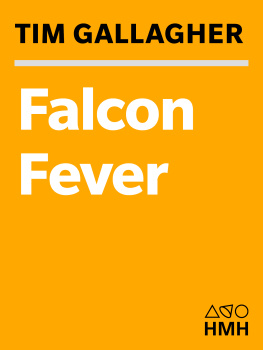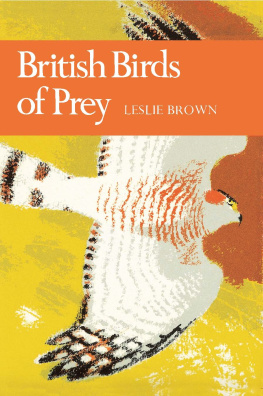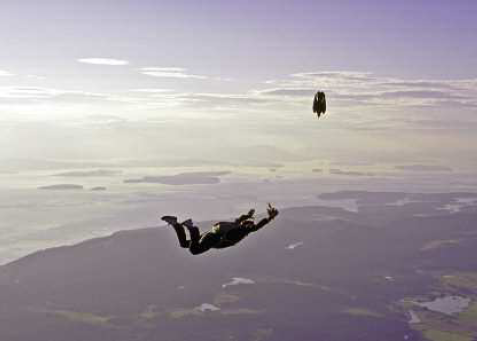Falcon. (Animal)
1. Falcons 2. Animals and civilization
I. Title
Ringed with the azure world: peregrine falcon and skydiver.
Introduction
In 1998 Ken Franklin trained a young female peregrine falcon called Frightful to follow a free-falling speed-suited skydiver out of an aircraft door at 16,000 feet. In a series of dives, high-speed film footage showed the falcon in her element, tucking her head deep into her collarbones, feet sleek beneath her feathers, moulding herself into the perfectly aerodynamic profile of a raindrop. At speeds of over 100 miles an hour, the minutest alterations to her body shape or wing profile gave punishingly exaggerated effects; she looked, as Franklin later described, shrink-wrapped, mummified. And just as it seemed impossible for her to fall any faster, shed change her shape again. Shrugging one shoulder sharply forward to slice through the molecules of resistant air, she dropped away from the astonished cameraman, cutting the sky in two at a velocity of over 200 miles an hour.
Falcons are the fastest animals that have ever lived. They excite us, seem superior to other birds and exude a dangerous, edgy, natural sublimity. All this means nothing to falcons, of course; these are our own concepts. Though real, living animals, falcons cant be seen except through what anthropologist Franz Boas described as your Kulturbrille, the invisible mental lens your own culture gives you through which you see the world. All encounters with falcons are in a strong sense encounters with ourselves whether the falcons are real or imaginary, whether seen through binoculars, framed on gallery walls, versified by poets, flown as hunting birds, spotted through Manhattan windows, sewn on flags, stamped on badges, or seen winnowing through the clouds over abandoned arctic radar stations.
Animals are so malleable a repository for human meanings that some modern critics see them as existing almost entirely within the realm of human representation. But falcons are not merely imaginary receptacles for symbolic meaning. They live, breed, fly, hunt, breathe. Pigeons have no illusions that falcons are merely empty signifiers filled with meaning by humans. And as living animals, real falcons constrain, undercut and sometimes resist the meanings people have attached to them.
The broad-shouldered, solid form of a falcon sitting silently on a dead tree or a rocky outcrop has an unmistakable, magnetic gestalt and, when it takes flight, a power and ease in the air that does strange things to the susceptible viewer. In their presence, confessed 1950s nature writer W. Kenneth Richmond, we may as well acknowledge the fact that we are inferior beings Terror and beauty, cold silver and hot blood are fused in them to produce the natural aristocrat, before adding defensively, at least so it has always seemed to me.Baker searches for the peregrine day after day, every sighting imbued with deep personal significance. He finds traces of where the peregrine has been old kills, a few feathers. He searches for the right clothes, the right rituals and actions to allow him to get ever closer, suffering privations and hardships on his way. He envisions the landscape as animated entirely through the falcons power, creating life from the still earth by conjuring flocks of birds into the air. He assumes humility and these become the diaries of a man seeking to become invisible, growing so familiar to the falcons he sees on his daily treks that they trust him as part of the landscape he and they both move upon. And finally, at the end of the book, as night falls, an epiphany. Baker is gripped by a sudden certainty that he would find the peregrine by the coast an irresistible inward call that sends him out into a bleak near-night on a quest through a desolate landscape. And there he finds the falcon. He slowly approaches until he stands right before it. It is roosting in a thorn bush. It accepts his presence, closes its eyes and returns to sleep. And Baker is fulfilled.
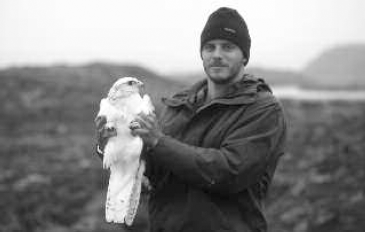
| The white gyrfalcon, for millennia the most revered and sought-after falcon of all. Trapped on the coast of Greenland as part of a study of falcon migration, this female is about to be released by field biologist Erin Gott. |
What is this animal that provokes so much emotion? In the first chapter I sketch out some of the biological and ecological dimensions of falcons, and in the rest of the book explore how people have responded in such a curiously strong manner to something that, after all, is just a bird.

